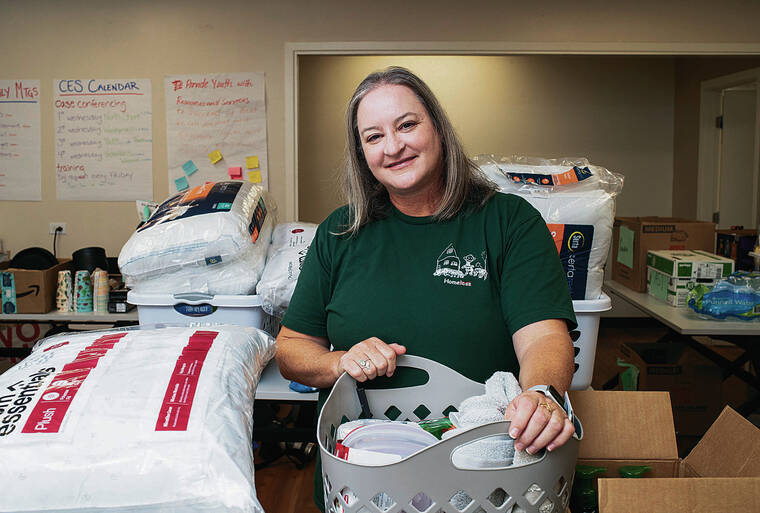After one year the city has achieved its goal of housing over 300 homeless families using a voucher program supported through federal pandemic relief funds.
The city’s Oahu Housing Now program, launched in March 2021, uses money from the Coronavirus Aid, Relief and Economic Security Act to provide temporary rental assistance and support services to its target population.
The city gave Partners in Care, a nonprofit that coordinates housing and services for Oahu’s homeless, responsibility for running the program and meeting its goal of housing 300 families.
According to Partners in Care Executive Director Laura E. Thielen, in its first year the program managed to find places to live for 302 households accounting for 798 individuals. But it hasn’t been without its challenges.
“The seeking of units that will pass inspection with landlords who are willing to rent to a subsidy program has been very difficult,” she said.
The use of incentives and matching landlords and tenants with case managers from homeless service providers Family Promise and Alternative Structures International “has really made the biggest difference in getting all of our folks housed over the last year,” Thielen said.
Those who received the vouchers may remain on the program for up to 12 months, but the city will use residual funds to help some tenants stay longer as they approach the one-year mark. Thielen also hopes to find more funding at either the local or federal level to continue Oahu Housing Now past its Sept. 30 deadline to reach more people and extend assistance to those already in the program.
“What we have found is that even though the folks that we targeted for this program were possibly higher-functioning and had the possibility of being self-sufficient, it’s still such an expensive market here,” she said.
“Even after a year, many of them still need more assistance … and we don’t want any of these folks to return to homelessness.”
While housing programs for the homeless traditionally have targeted individuals considered the most vulnerable, based on an assessment tool, Oahu Housing Now tried something different. Instead of focusing on those who have been homeless the longest and have serious disabilities, it instead looked for those lower on the “vulnerability index” who were working but unable to work full time because of their housing status or lack of child care.
“Up until Oahu Housing Now, they hadn’t had an opportunity to get housing because we never got below the most vulnerable people on our list,” Thielen said.
“The project was really to get past COVID, and then to also help people get a better housing history behind them, and then enable them to save up some money to help them be self-sufficient after this program.”
Mayor Rick Blangiardi applauded the Oahu Housing Now program’s approach, calling it “a vital piece to our housing strategy for Honolulu.”
“Oahu Housing Now gave us a chance to address new groups, like the working homeless, and provide them with opportunities to succeed,” Blangiardi said in a statement.
The program also looked to address racial disparities within the homeless population, especially for Native Hawaiians and Pacific Islanders.
“Thirty-one percent of our households are Native Hawaiian, and over 22% are considered Pacific Islander,” Thielen said. “So, good demographics there to really address some of the key groups that often do not get resources.”
Partners in Care has been working on creating better relationships with landlords to encourage more people to accept tenants with housing subsidies. Thielen pointed to several bills moving through the state Legislature that would provide incentives for landlords who rent to people with vouchers.
“That’s really acknowledging the expense that landlords have to incur, and so we’re recognizing that and responding to that versus just expecting landlords to just hand over their biggest asset they probably own and throw the dice to see if it works out or not,” she said.
“It doesn’t mean that we’re going to prevent every single person from making a mess of a unit. But we now are partners with landlords, versus just being another entity that doesn’t interact with them.”
One of the main issues Thielen wanted to see addressed that made administering the Oahu Housing Now program more difficult is servicing those coming out of public institutions such as prisons, especially those who have either a nonexistent or bad housing history.
“Those are the folks that we really want off of the streets and yet the hardest to get landlords to buy into. So, we’re hoping that there can be some measures to really help before they get released so that they have a better outcome once they are released,” she said.
“We understand that when you have a criminal history, it’s hard for a landlord to look past that. But at the same time, if we don’t house these folks, then there’s more of a possibility of recidivism, and that’s a very expensive thing.”

